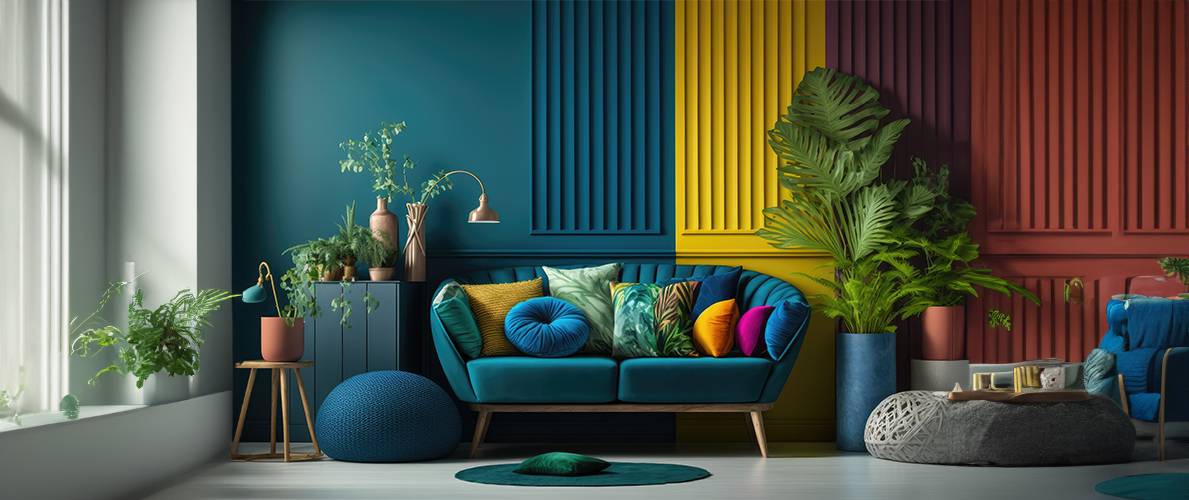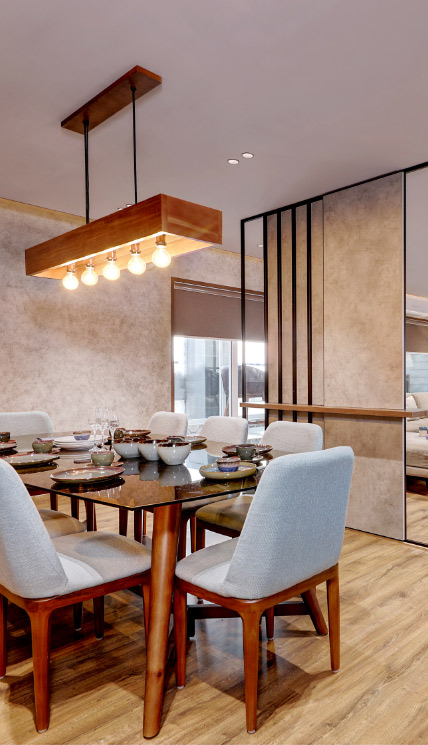Best-rated interior design firms create stunning spaces.
Best-rated interior design firms create stunning spaces.
Blog Article
Change Your Home With Vital Concepts of Interior Decoration and Appearances
The art of transforming your home through the crucial principles of interior design and visual appeal requires a thoughtful method that balances shade, balance, and spatial understanding. By recognizing the effect of color theory and the value of structure and patterns, one can develop spaces that are not just visually appealing but additionally deeply personal. Achieving this stability entails even more than simple design; it includes a calculated plan and a keen understanding of how each component connects within a room. As we discover these foundational concepts, consider just how they could redefine your understanding of home and personal expression.
Comprehending Color Theory
Color concept is a fundamental facet of interior decoration that dramatically influences mood, assumption, and general visual. Comprehending the concepts of shade theory enables designers to produce rooms that resonate psychologically with owners while satisfying useful requirements (miami interior design). Colors can be classified right into 3 key types: key, secondary, and tertiary. Each classification plays an essential duty in developing harmony within an area.
The mental influence of shades is extensive; warm shades such as reds and oranges stimulate power and warmth, while awesome tones like blues and greens advertise peace and serenity. The use of complementary colors improves aesthetic rate of interest, producing striking contrasts that can boost an area's appeal.
Neutral colors, on the other hand, function as a versatile backdrop, allowing various other design elements to shine. It is important to take into consideration variables such as lights and the room's purpose when selecting a color scheme, as these can alter the understanding of colors throughout the day.
Ultimately, a well-considered color pattern can change a room, cultivating a feeling of comfort and style that aligns with the residents' preferences. Proficiency of shade concept is, consequently, a crucial ability for any interior developer intending to develop harmonious and inviting settings.
Attaining Balance in Design
How can designers attain a sense of equilibrium in their rooms? Attaining balance in design is fundamental to developing harmonious interiors. Developers can use three key sorts of balance: balanced, asymmetrical, and radial. Symmetrical balance includes organizing elements uniformly around a central factor, promoting a feeling of order and peace. This type frequently includes pairs of furnishings or artwork, enhancing visual stability.
Unbalanced balance, on the various other hand, relies on varying elements that still attain a cohesive appearance. This approach enables for more vibrant and casual plans, giving interest while keeping equilibrium. By carefully choosing differing sizes, colors, and appearances, designers can develop an aesthetically compelling area that really feels balanced yet energetic.
Radial balance stresses a central focal point with components emitting outside. This design is commonly seen in round formats, where furniture and design produce a natural border that attracts the eye inward.
Eventually, achieving equilibrium calls for thoughtful consideration of range, percentage, and the relationships between aspects. miami interior design. By masterfully applying these equilibrium principles, designers can transform rooms right into atmospheres that really feel both aesthetically pleasing and functionally i thought about this harmonious, improving the overall experience for passengers
Significance of Spatial Awareness

A keen sense of spatial awareness permits developers to recognize focal points within a room, leading the audience's focus to vital attributes while keeping a total feeling of unity. It additionally assists in the tactical placement of illumination, which can substantially affect the assumption of room and state of mind. Furthermore, understanding spatial relationships enables the developer to accommodate the certain requirements of citizens, ensuring that each location offers its designated function without compromising looks.
Inevitably, spatial understanding is important for maximizing the possibility of any type of interior room. By very carefully considering the interaction between measurements, design, and function, developers can create settings that not only fulfill sensible demands but likewise evoke a feeling of convenience and beauty, improving the general check this site out living experience.
Integrating Appearance and Patterns
Accepting a varied variety of appearances and patterns can considerably improve the visual and responsive appeal of an indoor space. The calculated usage of different products-- such as wood, steel, fabric, and stone-- develops depth and interest, making an area really feel more inviting and dynamic. As an example, combining smooth surfaces with rough textures can establish a balance that draws the eye and involves the detects.
When incorporating patterns, consider both scale and rep. Huge patterns can work as focal points, while smaller sized, refined designs can complement other components without frustrating the room. Layering patterns, such as pairing floral cushions with striped tosses, includes intricacy and a feeling of consistency if carried out thoughtfully.
It is also vital to keep a natural color palette, making certain that structures and patterns work together instead of compete for focus. By picking a couple of crucial structures and patterns, you can produce a combined aesthetic that reflects your individual style while enhancing the general atmosphere of the space. Ultimately, the careful unification of these aspects can transform an ordinary space right into an innovative setting rich with personality and warmth.
Personalizing Your Area
Producing a space that mirrors your character is vital to attaining a genuinely inviting atmosphere. Personalization in indoor style permits you to infuse your one-of-a-kind design and interests into your home, changing it from a simple sanctuary into a sanctuary that talks to who you are. Begin by choosing a shade palette that reverberates with your emotions-- vibrant shades can invigorate, while soft tones use serenity.
Incorporate art work and decor that show your interests, whether it be travel, nature, or abstract principles. Displaying personal collections, such as publications, pictures, or mementos, can stimulate cherished memories and produce centerpieces within a room. Furthermore, take into consideration tailoring practical pieces, like upholstered furnishings, to line up with your visual choices.

Verdict
To conclude, the makeover of a home with the essential principles of interior decoration and aesthetic appeal demands a comprehensive understanding of shade concept, equilibrium, spatial recognition, texture, and personalization. Each aspect contributes significantly to producing an unified and practical living setting - Architecture Firm. By attentively incorporating these concepts, people can enhance the visual charm and emotional resonance of their spaces, inevitably cultivating a home that mirrors unique identifications while providing convenience and practicality
Report this page